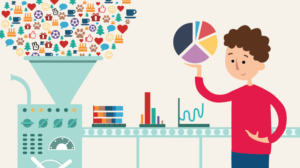Most traditional methods of knowledge in real estate involved looking backwards.
Agencies would build up a stock of information based on what went before, then used some measure of intuition to project into the future.
 This approach is rather satisfying to those who profess to be some kind of real estate guru, but the unreliable nature of this kind of speculation can leave property investors unable to confidently throw their investments into property.
This approach is rather satisfying to those who profess to be some kind of real estate guru, but the unreliable nature of this kind of speculation can leave property investors unable to confidently throw their investments into property.
Now, things have changed. Big data is the game changer.
Of course, all data is retrospective – based on things that have gone before – but when so much data is collected on so many factors and how they affect property values so that any one factor can be isolated and examined, reasonably accurate predictions can be made into the future.
Let’s say a gym and a café have just opened up in a particular area, and a bus route has been diverted to it. There is no way that a human mind can keep track of all these factors will have on the demographics in that area.
You can guess, and you might be sort-of right, but that’s about it.
Whereas a computer can, if given the right data. You do the rest.
Big data puts it all together and quantifies the effect of each factor. A 20% rise in one demographic due to the café, a 10% rise in the desirability of flats because of the gym, and a rise in two different demographics due to the new bus route.
 But did you have so many of those demographics in your area in the first place? Perhaps that won’t affect the kind of people and properties under your care. If you banked on a rise in demand because of the bus route, but it conversely actually represented a drop – then where will your predictions be?
But did you have so many of those demographics in your area in the first place? Perhaps that won’t affect the kind of people and properties under your care. If you banked on a rise in demand because of the bus route, but it conversely actually represented a drop – then where will your predictions be?
With this in mind, almost anything can be researched for its effect on your suburb: How many books are checked out of the local library, how many people attend the swimming pool, how well the grocery store is doing compared to the restaurants.
Another device would be to work out what to build. When developers want to know what kind of dwelling to build in a particular area, or where exactly to put it, they can use this kind of data to cross-reference the proximity of different features. Within two kilometres of a train line, within one of a supermarket, within 5 of a sports ground…
This data could even be used to work out which feature is missing, and prompt that commercial venture as a boon to all.
The more data you have at your fingertips, the better able you are to more accurately predict real estate patterns in the future.
Knowledge is power.
To increase your knowledge, and therefore your power, contact Radius Suburb for data on your district.



'Get ahead of the curve – use big real estate data to improve your decision making' have no comments
Be the first to comment this post!